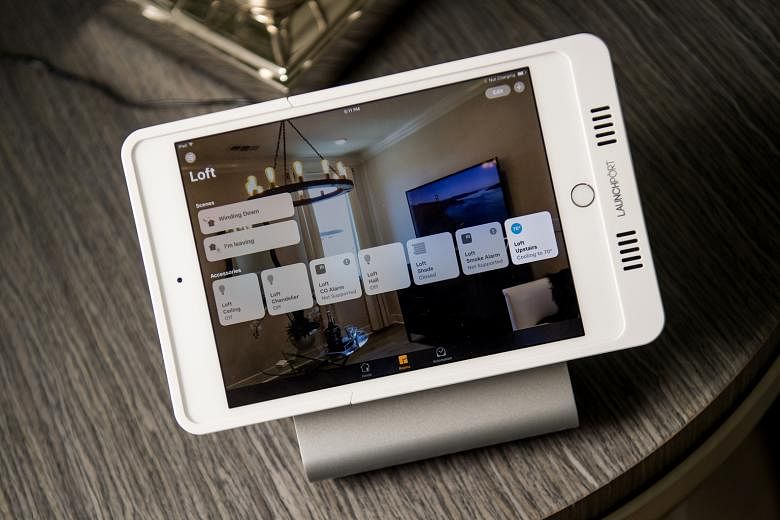BOSTON• In a darkened master bedroom, Mr David Kaiserman stood in shirtsleeves next to a turned-down king bed.
"Good morning, Siri," he said to the iPad in his hand and the lights went on while the blackout shades retracted.
"Your home is ready to rise and shine," the virtual assistant replied.
Inside this four-bedroom stucco house in Alameda, California, Mr Kaiserman, the president of the technology division at construction company Lennar, was pitching a vision of a home controlled via iPhone or iPad.
Tap your phone and AC/DC's Back In Black blasts. Tap again and the bath runs at a blissful 38 deg C. Sweet, right?
About US$30,000 (S$41,700) worth of gadgets and gizmos were on display here, many of which run with Apple's free HomeKit app.
As iPhone sales growth slows, Apple is teaming up with a handful of builders and using these kinds of test beds to inch its way into the market for Internet-connected home furnishings, a nascent field that has attracted rivals such as Alphabet Inc's Google and Amazon. com.
Unlike Google and Amazon, however, Apple is not hawking hardware meant to connect the home.
Instead, the HomeKit app could increase the value of its iOS ecosystem - and make it tougher for users to switch to Android phones and tablets.
"We want to take home automation to the mainstream," said Mr Greg Joswiak, Apple's vice-president of product marketing.
"The best place to start is at the beginning, when a house is just being created."
The convenience on display in the Alameda stucco does not come cheap.
A single motorised, battery-operated Lutron shade starts at US$349. Or consider the Schlage "touchscreen deadbolt", which can be controlled remotely, so you can text an unexpected visitor a code.
It can retail for US$200. A regular deadbolt costs US$32 at Home Depot - and there is always hiding a key under the flower pot.
Lennar builds the cost into the price of homes.
The Alameda house sells for US$1.2 million, though it is a beta model and an actual dwelling would not include US$30,000 worth of gadgets.
Apple is also working with other builders. The companies declined to say when the homes would go on sale.
For most people, connected homes remain a distant reality, said Mr Jonathan Gaw, an analyst with research firm IDC.
The proliferating devices remain difficult to install in older homes and, in some cases, seem useless. Mr Gaw cites the wireless candle he saw the other day.
"Give me a break," he said. "It tells people that we have gone too far. There's too much crap out there."
No doubt, Apple would be heartened by the experience of Mr Ken Bieber.
Last year, the 39-year-old executive at a consulting firm bought a US$357,000 Lennar smart home.
With his Nexia system, his lights automatically start dimming in the evening, signalling that it is time to get ready for bed.
When his wife April went into labour two months ago, he stayed with her in the hospital and texted a temporary entry code to a friend who walked the dog.
Since buying his house, he has spent another US$1,000 on wireless motion detectors, a video camera and controls for his light dimmers, ceiling fans and irrigation system.
He plans to add motorised blinds.
"I'll be watching a movie and suddenly I have to get up and pull the blinds - apparently it's just too much for me at that point," he said.
"I'm so used to saying things and they just happen."
BLOOMBERG

